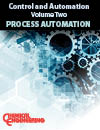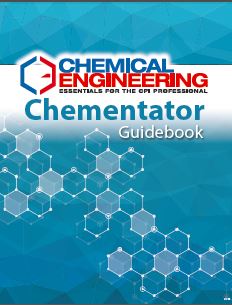Description
During chemical process operations, risk can take many forms. For instance, risk associated with management and engineering decisions can create a range of environmental, health and safety consequences, lead to sub-optimal process operations and depressed production yields, and incur additional maintenance and repair requirements.
Similarly, risk associated with project planning, modeling and execution can increase financial and business risk, by resulting in cost overruns and schedule delays, depressed profit margins and squandered market opportunities.
This two-volume Chemical Engineering Guidebook brings together a diverse array of engineering articles, to help facilities recognize all of the many forms of risk that can arise during chemical process operations, and take practical steps to manage the properly in order to optimize outcomes.
Delivered in a PDF format, 141 pages.
Articles Include:
Tolerable Risk
While determined risk is generally well understood, tolerable risk can be the missing link to complete risk assessments
A Checklist for Safer Chemical Batch Reactions
A good understanding of the reaction chemistry is needed for a safe process design
Designing Safer Process Plants
Several often-overlooked strategies to increase inherent safety are discussed here
Better Chemistry By Design
Simulation software helps to create higher-performance, safer and more-economical CPI plants
Revamping Your Process Plant
An overview of some options to consider for increasing capacities
A Safety Checklist For Laboratories
These nine best practices for managing change in laboratories can help ensure a safe workplace
Designing for A Safe Process
Incorporating safety considerations throughout process design lowers the risk of a hazardous event
Avoiding Project Failures
Recognize these key project-failure modes, so that corrective action can be taken
Plant Revamps and Turnarounds: Some Lessons Learned
Although time is always precious, taking shortcuts and skipping standard procedures can be costly
Improve Your Contingency Estimates for More Realistic Project Budgets
Reliable risk-analysis and contingency-estimation practices help to better manage costs in CPI projects of all sizes
Managing Compliant MSDSs and Labels
Compliant MSDS programs depend on inventory management, regulatory knowledge and consistent authoring
Accelerating Process and Product Development
These simple strategies can be used to speed up and increase the success rates of R&D projects
Design Safer Solids Processing Plants
This approach defines a systematic framework and points toward relevant sources in the public domain
Effective Plant Safety Management
Three critical junctures and seven critical steps for plant safety are outlined
Safety-Instrumented Systems: Control Valves As Final Elements
The scenarios presented here highlight the advantages and disadvantages of using a control valve in an SIS
Seven Tools for Project Success
Having the right tools is essential for success. These tools are of use to both novice and experienced project managers
Design Safety Instrumented Systems with Relevant Data
Laboratory-based data can be too optimistic; some data from the field are too pessimistic. Here is how to deal with
that dilemma
Project Optimization Through Engineering
Follow these practical recommendations to reduce capital outlay and operating costs, deliver shorter schedules and
improve design quality
INDUSTRIAL CONTROL SYSTEMS SECURITY: The Owner-Operator’s Challenge
Addressing the cybersecurity of industrial control systems requires a collaborative response, beginning with a realistic
assessment
Managing Material Safety Data Sheets in the Workplace
While regulatory agencies outline requirements for communicating chemical hazards, the format of compliance is
up to the employer. Software tools can be helpful aids in meeting these requirements
Condition-Based Maintenance Management Enhances Reliability
Understand reliability, condition monitoring and maintenance management to keep rotating equipment in top form
Design of Experiments (DoE): Optimizing Products and Processes Efficiently
Learn how DoE can help save time and money in process design and optimization with this primer
The Owner Role in Capital Projects
Avoid delays, cost overruns and more with significant owner involvement
Reactive Chemistry in the CPI
Improper handling of reactive chemicals can result in catastrophic industrial disasters, and
a clear understanding of these materials is essential for safe process-design practices
The Next Step Change in Process Safety
Leveraging the convergence of operational and information technologies can aid in minimizing risk
Measurement Best Practices for Safety Instrumented Systems
How to comply with new standards to maximize plant safety and availability while minimizing life-cycle costs




